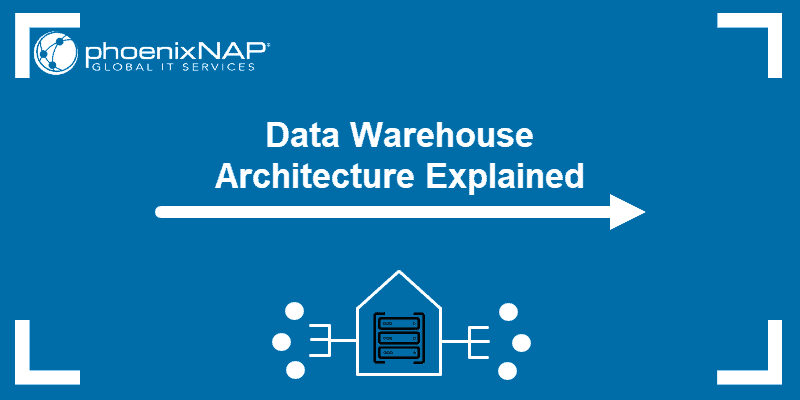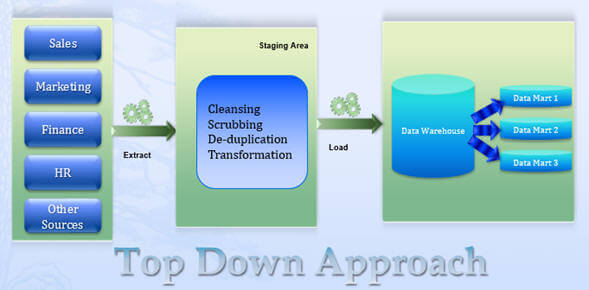Table Of Content

Data governance also includes compliance with relevant regulations, such as the General Data Protection Regulation (GDPR) or industry-specific standards. Implementing data governance practices helps build trust in the data and ensures that it remains a reliable asset for decision-making. Most effort is invested in building and maintaining the warehouse while the value-add of having a warehouse for business analytics is a much smaller portion of the effort. Sometimes, it takes too long in the project cycle to show any meaningful value to the client, and when the system is finally in place, it still requires a lot of IT effort to get any business value out of it. As we said in the introduction, designing and deploying business intelligence systems can be an expensive and lengthy process.
Frequently Asked Questions (FAQs) About Data Warehouses
Although both approaches utilise a staging area, it’s technically an optional step. The reason most data warehouses are built with a staging area in mind is that time-sensitive documents should be moved into the database at coordinated times and not simply as soon as the data becomes available. In this approach, data marts are constructed separately for each division of the company (e.g., marketing, sales, etc.). They exist independently of the data warehouse, but they draw data from a communal, centralised database.
Architecting the Data Warehouse to Your Business
Another popular data warehouse design modeling technique for enterprises, the data vault includes three types of entities. These are hubs representing core business concepts, links acting as the bridge between hubs and satellites, and satellites comprising information related to various hubs. This is one of the most important factors to consider in data warehouse design.
Understanding Data Warehouse Automation
Data warehouses are often thought of as business intelligence systems created to help with the day-to-day reporting needs of a business entity. Gartner estimates that close to 70 to 80 percent of newly initiated business intelligence projects fail. This is due to myriad reasons, from bad tool choice to a lack of communication between IT and business stakeholders. Having successfully implemented BI projects across industries, I hope to share my experiences in this blog post and highlight key reasons why business intelligence projects fail. This article will present counter-measures to failure based on three principles that should govern how data warehouses are built.

Supply Chain Management
We will also provide guidance on when and how to leverage automation to enhance your data warehouse’s efficiency and agility. Data partitioning involves dividing data into smaller, more manageable segments based on defined criteria, such as range, list, or hash partitioning. Partitioning offers several benefits, including improved query performance, reduced storage requirements, and enhanced scalability. By distributing data across multiple partitions, queries can be executed in parallel, leading to faster response times. Additionally, partition pruning techniques allow the database engine to skip irrelevant partitions during query execution, further optimizing performance. In this section, we will provide a comprehensive overview of data warehousing, covering its definition, goals, and benefits.
By consolidating data from disparate sources into a single location, data warehouses enable organizations to gain a holistic view of their operations, customers, and market trends. This, in turn, empowers businesses to identify patterns, trends, and insights that can drive strategic planning, optimize operations, and enhance overall efficiency. Now that you understand the multidimensional representation used by business analysts, you are ready to learn about data warehouse design using a relational database.

Looking at historical data will allow you to analyze trends over time and strategize effectively. There are many ways that you can store data, one of them being data warehousing. This is an excellent option for businesses that need to look at a large amount of data from multiple sources. Today, let's learn what a data warehouse is and how it can help you analyze your data. Firstly, it accelerates the development process by automating time-consuming and repetitive tasks, allowing developers to focus on higher-value activities.
A Beginner's Guide to Data Warehousing - Unite.AI
A Beginner's Guide to Data Warehousing.
Posted: Tue, 05 Dec 2023 08:00:00 GMT [source]
Using an LLM API As an Intelligent Virtual Assistant for Python Development
They are designed to handle large volumes of data and support complex queries without impacting the performance of operational systems. By storing historical information, data warehouses also allow for in-depth trend analysis, something that is vital in strategic planning and forecasting today. Data marts include the lowest grain data and, if needed, aggregated data too. Instead of a normalized database for the data warehouse, a denormalized dimensional database is adapted to meet the data delivery requirements of data warehouses.
Planning for ETL
There are several popular data warehouse automation tools available in the market. These tools provide a range of features and capabilities, such as code generation, data modeling, data lineage tracking, and deployment automation. Some notable tools include WhereScape, Wherescape RED, TimeXtender, and Matillion. Choosing the right tool depends on your specific requirements, budget, and existing technology stack. It is important to evaluate the features, scalability, and user reviews of different tools beforemaking a decision. A well-designed data warehouse should provide fast and efficient access to data for reporting and analysis purposes.
Data governance encompasses the processes, policies, and standards that ensure the quality, integrity, and compliance of data within the data warehouse. Establishing data governance frameworks and practices is crucial to maintain data consistency, accuracy, and relevance. This involves defining data ownership, establishing data quality metrics, implementing data validation rules, and enforcing data stewardship roles and responsibilities.
While both a data warehouse and data lake store data, the data warehouse has a specific design and is based on requirements. The data lake stores data without a specific design and without an identified need for analysis. Businesses want their websites and applications to be fast, and so do customers. Data security and governance are of paramount importance in any data-driven organization. In this section, we will discuss the various security measures and best practices that should be implemented to protect your data warehouse from unauthorized access and breaches.
Scalability and performance tuning techniques, such as parallel processing and data partitioning, can help overcome these challenges. Additionally, ensuring data quality and monitoring for data anomalies are ongoing tasks that require continuous attention and maintenance. When designing dimensional models, there are several best practices to consider. Firstly, it is crucial to involve business users and stakeholders in the modeling process to ensure the model reflects the analytical requirements of the organization. Secondly, choosing appropriate grain or level of detail for the fact table is essential to strike the right balance between detail and performance.
Performance testing tests the speed and efficacy of the data warehouse, while data validation tests the accuracy and completeness of the data. Most small-to-medium-sized businesses lean on established BI kits like those mentioned above. But, some businesses may need to develop their own BI tools to meet ad-hoc analytic needs. For example, a Sales Ops manager at a large company may need a specific BI tool for territory strategies.


No comments:
Post a Comment